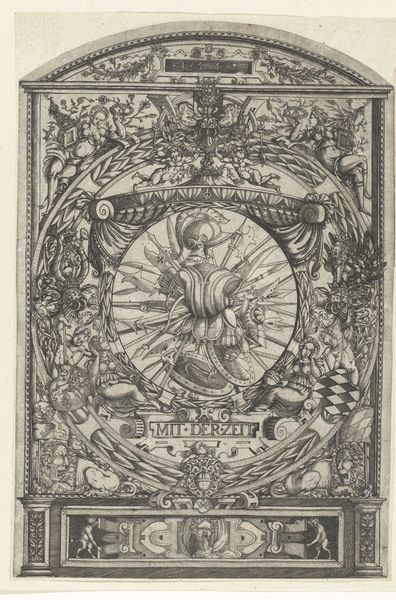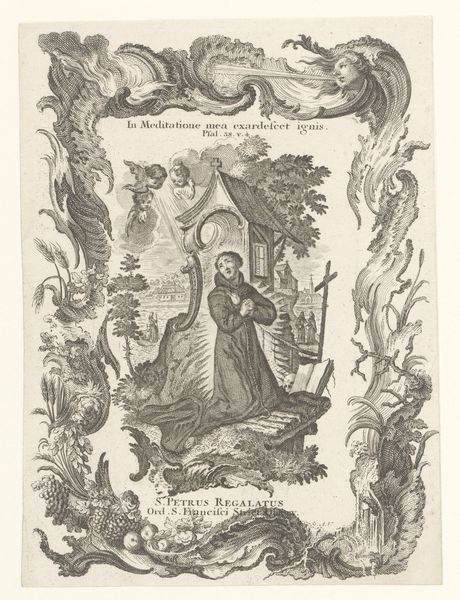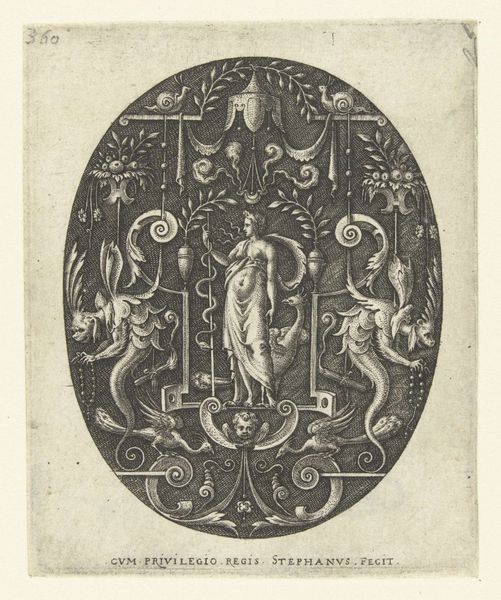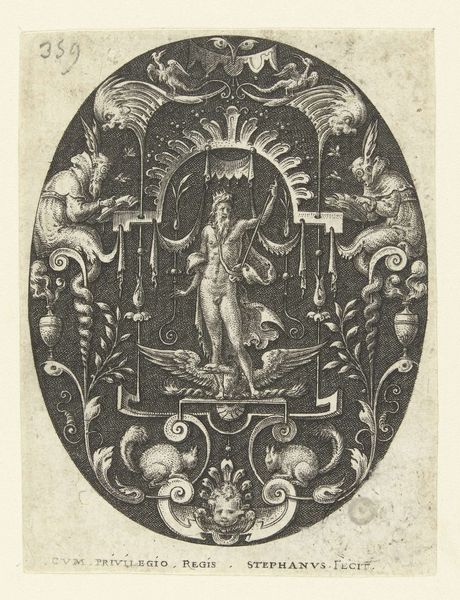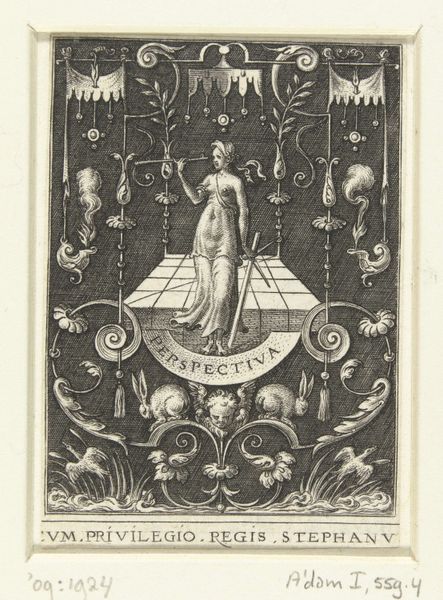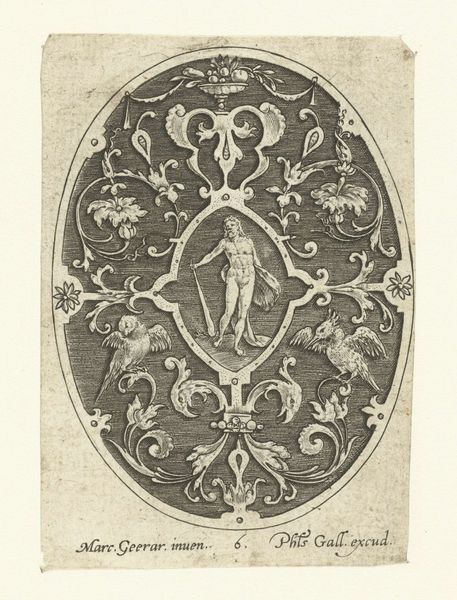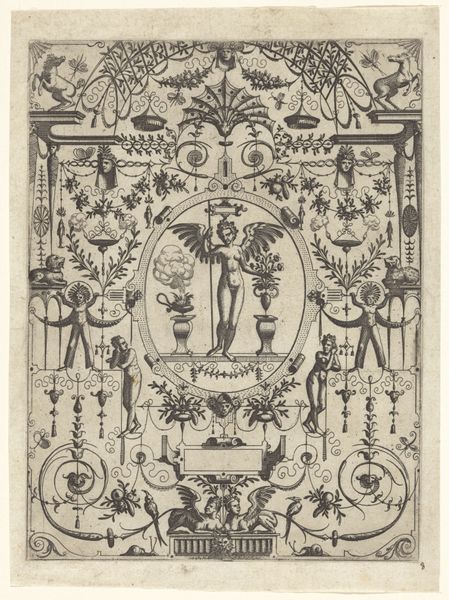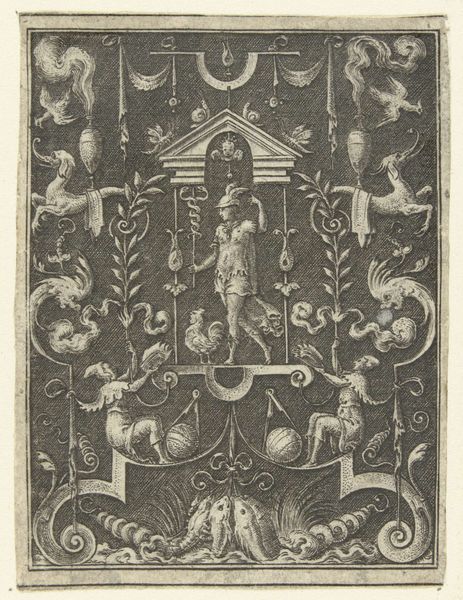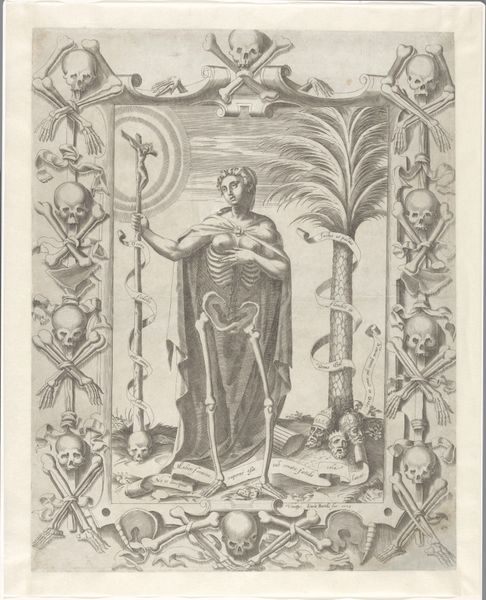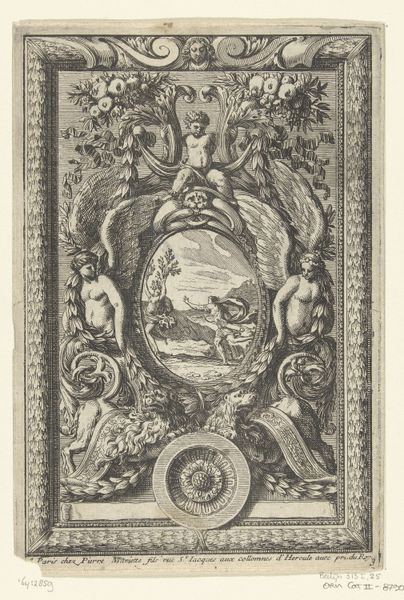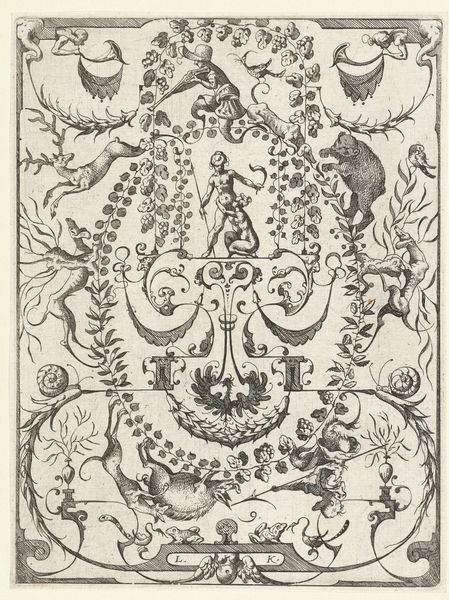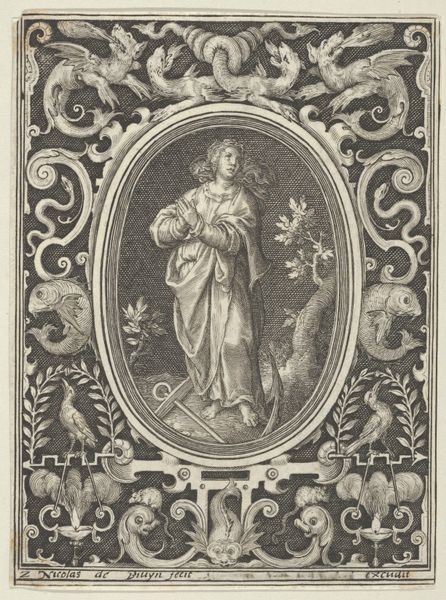
drawing, print, engraving
#
drawing
#
allegory
#
narrative-art
#
pen drawing
# print
#
old engraving style
#
figuration
#
line
#
northern-renaissance
#
engraving
Dimensions: height 417 mm, width 293 mm
Copyright: Rijks Museum: Open Domain
Curator: This is Hendrick Goltzius’s engraving from 1577, titled “Maria van de Rozenkrans,” currently held in the Rijksmuseum collection. Editor: It feels very ornate, doesn’t it? The way the central image of Mary is framed within a rosary bead tree, with all the little cherubic figures floating around. It almost feels overwhelming in its detail. Curator: The visual language of the piece is absolutely a reflection of the Counter-Reformation. Notice how the fifteen mysteries of the Rosary are depicted in circular vignettes around Mary. It's propaganda, in a sense—emphasizing key Catholic doctrines in response to Protestant challenges. Editor: I see those scenes, and it’s interesting how they become part of the ornamental design. Is the use of allegory intended to serve a particular didactic purpose here? Curator: Undoubtedly. The piece visually reinforces the importance of the Rosary and the veneration of Mary, especially in a period of religious conflict. Consider the deliberate placement of scenes: her immaculate conception, key moments from the life of Christ. These all served to counter specific Protestant theological arguments. Editor: It’s curious, this almost weaponized devotion. Seeing it now, centuries later, knowing the religious wars and persecution connected with this period...does knowing that shift our perception of it as something other than mere religious art? Curator: It demands that we view it through a lens of power and resistance. Art isn't made in a vacuum. Here, we have a beautifully rendered object, crafted during a time of social upheaval, designed to inspire and persuade. Editor: Seeing it now, you realize how fraught an image of devotion can be, weighed down by the historical realities surrounding it. But understanding the intent... that’s key, isn’t it? Curator: Precisely. The image provides such insight, helping us reflect on how visual representations can function as vital pieces of a much broader narrative of historical tensions. Editor: For me, it highlights the deep interconnectedness of art, faith, and political power in early modern Europe.
Comments
No comments
Be the first to comment and join the conversation on the ultimate creative platform.

